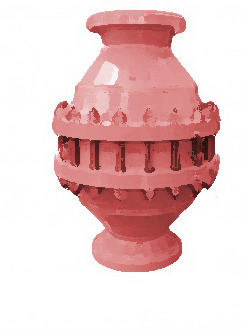Flame Arrestors
A flame arrester, also known as a flame arrestor or deflagration arrester, is a safety device designed to prevent the propagation of flames or explosions in a piping system or equipment where flammable gases or vapors are present. It is commonly used in various industries, such as oil and gas, chemical, and pharmaceutical, to mitigate the risks associated with the ignition of flammable substances.
The primary function of a flame arrester is to allow the flow of gases or vapors through a system while preventing the passage of flames or explosions. It consists of a housing or casing that contains a flame-quenching element, typically made of metal or other heat-conductive materials. The flame-quenching element is designed to absorb and dissipate the heat from a flame, disrupting its propagation and preventing it from reaching the flammable mixture on the other side of the arrester.
Here are the key components and features of a typical flame arrester:
1. Housing/Casing: The housing or casing of a flame arrester is usually made of a durable and heat-resistant material, such as stainless steel or cast aluminum. It provides structural support and contains the internal components.
2. Flame-Quenching Element: This is the crucial component of the flame arrester that extinguishes and quenches the flame. It is typically a metal matrix or wire mesh, arranged in a way that allows the flow of gases or vapors while providing a tortuous path for the flame. The flame-quenching element is designed to absorb heat and conduct it away from the flame, reducing its temperature below the ignition point.
3. Inlet and Outlet Ports: The flame arrester has an inlet port where the flammable gases or vapors enter and an outlet port through which the treated gases or vapors exit. The ports are designed to ensure proper alignment and connection with the piping system.
4. Mounting Flange: Many flame arresters have a mounting flange that allows them to be securely attached to the piping system or equipment.
5. Maintenance/Inspection Port: Some flame arresters include a maintenance or inspection port that allows access to the internal components for cleaning, inspection, or maintenance purposes




